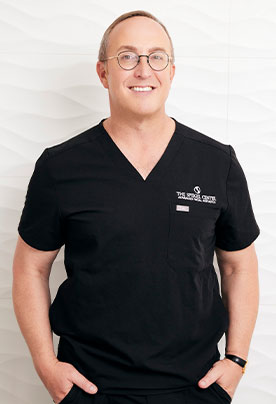Hyperbaric oxygen therapy, or HBOT, is a medical treatment that involves breathing in extra oxygen in a pressurized chamber. At The Spiegel Center we've recognized the significant benefits of pressurized oxygen to speed healing from surgical procedures and enhance recovery from a number of ailments. As pioneers in facial and body plastics and voted Best Recovery Experience in New England by Boston Common Magazine, The Spiegel Center has become a destination for hyperbaric oxygen therapy. Our patients rave about The Spiegel Center surgical outcomes which has at least something to do with our recommended hyperbaric oxygen therapy.
Positive aspects of hyperbaric oxygen therapy include its ability to enhance tissue repair, reduce inflammation, and improve circulation. By increasing the oxygen levels in the body, hyperbaric oxygen therapy can help promote healing and recovery in patients with chronic wounds, radiation treatments, and other medical conditions.
The concept behind hyperbaric oxygen therapy is quite simple. By increasing the amount of oxygen in the body through pressurization, it's believed increased oxygen can reach areas of the body that are not easily accessible through normal breathing during healing. This increased oxygen supply can help promote healing and reduce inflammation in damaged tissues.
When a person undergoes hyperbaric oxygen therapy, they lie in a chamber that is pressurized to an increase above normal atmospheric pressure. They then breathe in a higher percentage of oxygen than what is typically in the air for a specified period of time, usually around 60 to 90 minutes.
The pressurized environment allows the oxygen to dissolve in the blood plasma, which can significantly increase the amount of oxygen carried to the body's tissues. This high level of oxygen can stimulate the release of growth factors and stem cells, which can promote healing and tissue repair in an inflammation site, as a natural response to injury or infection. But when inflammation becomes chronic, it can lead to tissue damage and a delay in healing. By delivering oxygen to inflamed tissues, hyperbaric oxygen therapy can help reduce inflammation and promote healing.
Hyperbaric oxygen therapy has been shown to be effective in treating a variety of medical conditions, including diabetic foot ulcers, radiation injuries, and even some neurological disorders. It is important to note that hyperbaric oxygen therapy should always be conducted under the supervision of a trained medical professional, as there are potential risks and side effects associated with the treatment. Some believe that hyperbaric oxygen can help with long covid, muscular injuries, bone fractures, and even infertility.
While more research is needed to fully understand the mechanisms behind hyperbaric oxygen therapy, it is clear that this treatment can be a valuable tool in the management of certain medical conditions.
Historically, the concept of hyperbaric oxygen therapy can be traced back to the work of Paul Bert, a French physiologist, who conducted experiments on the effects of high-pressure oxygen on animals in the late 19th century. Bert's research laid the foundation for modern hyperbaric medicine by demonstrating the benefits of oxygen under increased pressure. His work paved the way for further exploration into the therapeutic benefits of hyperbaric oxygen in various medical conditions.
During World War II, hyperbaric oxygen therapy gained recognition for its effectiveness in treating decompression sickness, also known as "the bends," in divers and submariners. Albert Behnke, an American physiologist, conducted research on the use of hyperbaric oxygen to treat decompression sickness, leading to the establishment of hyperbaric chambers in military hospitals and diving centers. Behnke's contributions to the field of hyperbaric medicine helped save the lives of countless individuals suffering from decompression sickness.
In the modern era, Richard A. Neubauer, an American physician, has been at the forefront of promoting the benefits of hyperbaric oxygen therapy for a wide range of medical conditions. Neubauer's research has shown that hyperbaric oxygen can improve wound healing, reduce inflammation, and enhance the body's ability to fight infection. He has been a proponent of expanding the use of hyperbaric oxygen therapy beyond decompression sickness to include conditions such as traumatic brain injury, stroke, and chronic wounds.
Despite its benefits, hyperbaric oxygen therapy is not without its limitations and potential risks. Some negative aspects of hyperbaric oxygen therapy include the risk of oxygen toxicity, barotrauma, and claustrophobia. Patients with certain medical conditions, such as respiratory disorders and heart disease, may not be suitable candidates for hyperbaric oxygen therapy. It is important for healthcare providers to carefully assess the risks and benefits of hyperbaric oxygen therapy for each individual patient to ensure safe and effective treatment.
Looking ahead, the future of hyperbaric oxygen therapy holds promise for continued advancements in the field. Ongoing research is exploring the potential applications of hyperbaric oxygen therapy in treating neurological disorders, autoimmune conditions, and other chronic diseases. As technology continues to evolve, the development of portable hyperbaric chambers and other innovative treatment modalities may make hyperbaric oxygen therapy more accessible to a wider range of patients. By building on the foundational work of past and present pioneers in the field, the benefits of hyperbaric oxygen therapy will continue to expand and improve the quality of care for patients around the world.
Do you feel we've provided valuable information on hyperbaric oxygen therapy? Visit https://www.drspiegel.com/medspa-boston/body/mild-hyperbaric-oxygen-therapy/
to learn more about HBOT or contact us at [email protected] or 617-566-3223 to book a consultation for HBOT.





